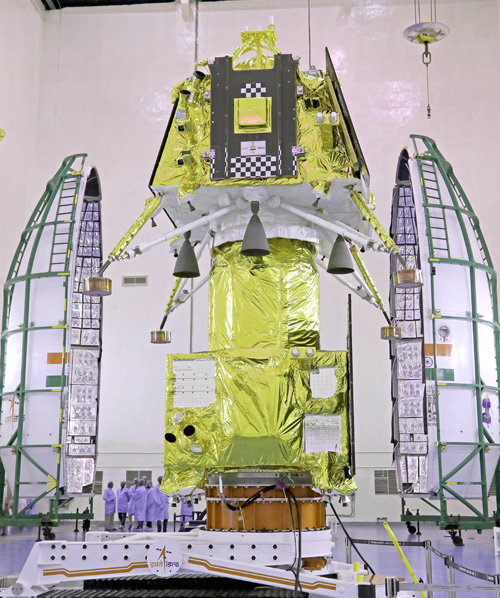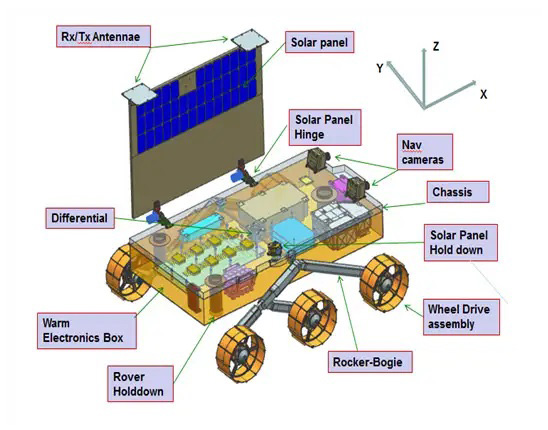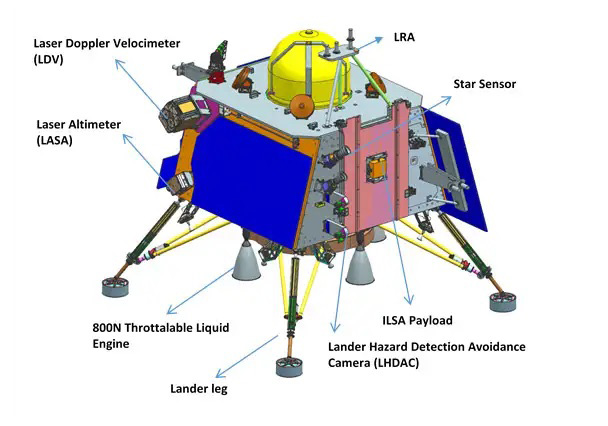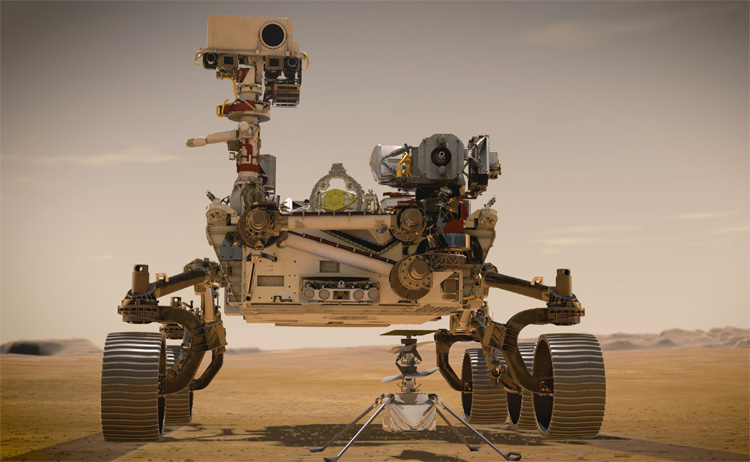INDIAN ARMED FORCES CHIEFS ON OUR RELENTLESS AND FOCUSED PUBLISHING EFFORTS

The insightful articles, inspiring narrations and analytical perspectives presented by the Editorial Team, establish an alluring connect with the reader. My compliments and best wishes to SP Guide Publications.

"Over the past 60 years, the growth of SP Guide Publications has mirrored the rising stature of Indian Navy. Its well-researched and informative magazines on Defence and Aerospace sector have served to shape an educated opinion of our military personnel, policy makers and the public alike. I wish SP's Publication team continued success, fair winds and following seas in all future endeavour!"

Since, its inception in 1964, SP Guide Publications has consistently demonstrated commitment to high-quality journalism in the aerospace and defence sectors, earning a well-deserved reputation as Asia's largest media house in this domain. I wish SP Guide Publications continued success in its pursuit of excellence.
- Prime Minister Modi Visits Punjab’s Adampur Air Base, Interacts with Airmen after Successful ‘Operation Sindoor’; Stern Message to Pakistan
- The layered Air Defence systems that worked superbly, the key element of Operation Sindoor
- Operation Sindoor | Day 2 DGMOs Briefing
- Operation Sindoor: India strikes back with Precision and Purpose
- Operation Sindoor: Resolute yet Restrained
- India’s Operation Sindoor Sends a Clear Message to Terror and the World – ‘ZERO TOLERANCE’
- Japan and India set forth a defence cooperation consultancy framework, talks on tank and jet engines
- Terrorist Attack in Pahalgam in Kashmir: Unfolding a long surgical war against PAK
- Lt General Pratik Sharma takes over Command of Indian Army's Northern Command
Rovers pave the way for interplanetary exploration
From Mars to Moon, robotic rovers have been instrumental in exploring and understanding the surface of other celestial bodies establishing a strong base of information.

India's Chandrayaan-3 lunar mission is close to reaching the moon. Launched on July 14, it is set to soft-land on the lunar surface on August 23, 2023. Chandrayaan-3 is a follow-on mission to Chandrayaan-2 to demonstrate end-to-end capability in safe landing and roving on the lunar surface. It consists of Lander and Rover configurations. Chandrayaan-3 consists of an indigenous Lander module (LM), a Propulsion module (PM), and a Rover named Pragyaan with the objective of developing and demonstrating new technologies required for Interplanetary missions.
The Chandrayaan-3 rover will carry out in-situ chemical analysis of the lunar surface during the course of its mobility.
The Lander will have the capability to soft land at a specified lunar site and deploy the Rover which will carry out in-situ chemical analysis of the lunar surface during the course of its mobility. Shortly after landing, one side panel of the Chandrayaan-3 lander will unfold, creating a ramp for the rover. The rover will emerge from the lander's belly, drive down the ramp, and begin exploring the lunar environment. The solar-powered lander and rover will have about two weeks i.e. 14 earth days and one lunar light day, to study their surroundings.
Rovers are essential tools in space exploration, typically tasked to collect information about the terrain and to take crust samples such as dust, soil, rocks, and even liquids.
The Pragyan (Sanskrit for "wisdom") rover has a rectangular chassis, 91.7 x 75.0 x 39.7 cm in size, mounted on a six-wheel rocker-bogie wheel drive assembly. It has navigation cameras and a solar panel that can generate 50 W. It communicates directly with the lander via Rx/Tx antennas.

India's lunar mission has again brought to light the key roles that a robotic rover plays in interplanetary missions, especially in exploring and understanding the surfaces of other celestial bodies like the Moon and Mars. Rovers are typically tasked to collect information about the terrain and to take crust samples such as dust, soil, rocks, and even liquids. Hence, they are essential tools in space exploration. Rover also underlines the role of robotics and Artificial Intelligence in space exploration that has helped us technologically reach places where humans could not yet set foot and prepare for the situations that humans may face on these celestial surfaces.

NASA's trio rovers for the moon
NASA is also planning to send rovers to study the surface of the moon. NASA is sending a trio of these miniature rovers to the Moon to see how well they can cooperate with one another without direct input from mission controllers back on Earth. About the size of a carry-on suitcase, each of the four-wheeled rovers will drive to find a sunbathing spot, where they'll open their solar panels and charge up. Then they'll spend the lunar daytime conducting experiments designed to test their capabilities.
NASA is sending a trio of these miniature rovers to the Moon to see how well they can cooperate with one another without direct input from mission controllers back on Earth.
Currently slated to arrive aboard a lander in 2024 as part of NASA's CLPS (Commercial Lunar Payload Services) initiative, CADRE's three small rovers will be lowered onto the Reiner Gamma region of the Moon via tethers. Then they'll spend about 14 Earth days – the daylight hours of a single lunar day – conducting experiments designed to test their capabilities. A teamwork-minded experiment to demonstrate new technology, the CADRE (Cooperative Autonomous Distributed Robotic Exploration) project marks another step the agency is taking toward developing robots that, by operating autonomously, can boost the efficiency of future missions. And, by taking simultaneous measurements from multiple locations, the rovers are meant to show how multi-robot missions could potentially enable new science or support astronauts.

"Our mission is to demonstrate that a network of mobile robots can cooperate to accomplish a task without human intervention – autonomously," said Subha Comandur, the CADRE project manager at NASA's Jet Propulsion Laboratory in Southern California. "It could change how we do exploration in the future. The question for future missions will become: 'How many rovers do we send, and what will they do together?'"
Currently slated to arrive aboard a lander in 2024 as part of NASA's CLPS initiative, the rovers will spend about 14 Earth days conducting experiments designed to test their capabilities.
Mission controllers on Earth will send a broad directive to the rovers' base station aboard the 13-foot-tall (4-meter-tall) lander. Then the team of little robots will elect a "leader," which in turn will distribute work assignments to accomplish the collective goal. Each rover will figure out how best to safely complete its assigned task.
The rovers will face several tests – all within view of a monitoring camera on the base station atop the lander. The first is to drive in formation and stay on course using ultra-wideband radios to maintain their relative positions while relying on sensors to avoid obstacles. In a second experiment, the rovers will each take a path of their own choosing to explore a designated area of about 4,300 square feet (400 square meters), creating a topographic 3D map with stereo cameras. The project will also assess how well the team would adapt if a rover stopped working for some reason. Success will indicate that multi-robot missions are a good choice for exploring hazardous but scientifically rewarding terrain.
NASA rovers will each take a path of their own choosing to explore a designated area of about 4,300 square feet, creating a topographic 3D map with stereo cameras.
And while CADRE isn't focused on conducting science, the rovers will be packing multistatic ground-penetrating radars. Driving in formation, each rover will receive the reflection of radio signals sent by the others, creating a 3D image of the structure of the subsurface as much as 33 feet (10 meters) below. Together they can gather more complete data than can current state-of-the-art ground-penetrating radars like the one on NASA's Perseverance Mars rover, RIMFAX (Radar Imager for Mars' Subsurface Experiment).
But there's more to CADRE than testing autonomy and teamwork capabilities. The rovers also need to survive the harsh thermal environment near the Moon's equator, which poses a challenge for such small robots. In the searing sunlight, the rovers could face midday temperatures of up to 237 degrees Fahrenheit (114 Celsius). Made with a combination of commercial off-the-shelf parts and custom-built components, the rovers must be robust enough to make it through the daytime heat while being compact and lightweight.
By taking simultaneous measurements from multiple locations, the rovers will seek to demonstrate how multi-robot missions could potentially enable new science or support astronauts.
At the same time, they need to have the computing power to run the JPL-developed cooperative autonomy software. The project's rovers and base station get their brain power from a small processing chip (the next generation of the cellphone-class processor inside NASA's Ingenuity Mars Helicopter), but using the processor contributes to the heat. To prevent the rovers from cooking, the CADRE team came up with a creative solution: 30-minute wake-sleep cycles. Every half-hour, the rovers will shut down, cooling off via radiators and recharging their batteries. When they simultaneously awaken, they'll share their health status with one another via a mesh radio network (much like a home Wi-Fi network) and once again elect a leader based on which is fittest for the task at hand. Then off they'll go for another round of lunar exploration.
While their mission will be brief, it could influence exploration in the long term. By taking simultaneous measurements from multiple locations, the rovers will seek to demonstrate how multi-robot missions could potentially enable new science or support astronauts.
While more rovers are being planned on the Moon, the Martian surface has been home to many human-robotic rovers already that have helped scientists in their quest to understand the Red Planet.
A successful run will show that a multi-spacecraft approach could help us explore hazardous but scientifically rewarding planetary body terrain, mission team members said.
Habitants of the Martian surface
While more rovers are being planned on the Moon as humans prepare to set foot on the lunar surface again, the Martian surface has been home to many human-robotic rovers already. Over the years, NASA has sent multiple robotic vehicles, called rovers, to Mars, namely Sojourner, Spirit and Opportunity, Curiosity, and Perseverance. These rovers have helped scientists in their quest to understand what different parts of the planet are made of. Mars is made up of lots of different types of rocks, and each rock is made up of a mixture of chemicals. A rover can drive around to different areas, studying the different chemicals in each rock. These chemicals can tell scientists something about the environments that changed that rock over time.
Spirit and Opportunity: Rover Parts
The rover has a:
| a body: | a structure that protects the rovers' "vital organs" |
| brains: | computers to process information |
| temperature controls: | internal heaters, a layer of insulation, and more |
| a "neck and head": | a mast for the cameras to give the rovers a human-scale view |
| eyes and other "senses": | cameras and instruments that give the rovers information about their environment |
| arm: | a way to extend its reach |
| wheels and "legs": | parts for mobility |
| energy: | batteries and solar panels |
| communications: | antennas for "speaking" and "listening" |





